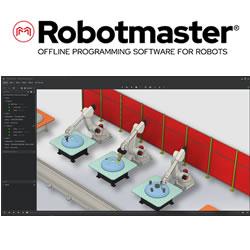UC San Diego Contextual Robotics Forum, on October 28, 2016, Will Focus on Shared Autonomy
On October 28, 2016, the University of California San Diego will host the annual Contextual Robotics Forum, a one-day event featuring talks by world leaders and local researchers developing robotics for the benefit of society. This years theme is “Shared Autonomy: New Directions in Human-Machine Interaction”.
San Diego, Calif. - On October 28, 2016, the University of California San Diego will host the annual Contextual Robotics Forum, a one-day event featuring talks by world leaders and local researchers developing robotics for the benefit of society. This years theme is "Shared Autonomy: New Directions in Human-Machine Interaction".
"We chose the theme because we are getting to the era of deploying robots in all places - but in almost every case there needs to be a human interacting with them," said Henrik Christensen, the new director of the Contextual Robotics Institute at UC San Diego. "We invited global and local thought leaders to discuss the question, ‘How do we build robots that empower people to do things that they couldnt before?"
The university hired Christensen in July 2016 to lead the Institute and serve as a professor in the Department of Computer Science and Engineering at the UC San Diego Jacobs School of Engineering. Christensen is among the experts giving a presentation. He will discuss big trends in robotics - where the field is going and how it plays into the broader ecosystem of intelligent homes, workspaces and appliances.
Another topic that will be discussed is intelligent transportation. Recently, Tesla released a partial self-driving Autopilot feature that requires drivers to keep their hands on the wheel and be prepared to take over at any given time. "Its a good start, but more work is needed to integrate people and cars," said Christensen. "Maarten Sierhuis from Nissan will talk about whats happening in the future of cars."
James Kuffner from Toyota and Raj Talluri from Qualcomm will discuss how robots will be used in the future of homes, and a cross-section of UC San Diegos cognitive science, engineering and computer science faculty will talk about robotics research thats being done locally. Get the latest program details for the forum here.
"In one day, attendees will get a big picture overview of the field and meet other members of San Diegos growing robotics community," said Christensen. "Its a mixture of the best in the world and the best from San Diego."
Attendees will also have the opportunity to interact with faculty and graduate students presenting robotics demos and posters.
Contextual Robotics at UC San Diego
The forum will showcase the innovative research being done at the UC San Diego Contextual Robotics Institute, which aims to develop safe, useful and human-friendly robotics systems that are deeply integrated with how humans live.
UC San Diego researchers from across all engineering disciplines, computer and data sciences, cognitive and neurosciences and the social sciences are advancing technologies critical for tomorrows robotic systems that will see and think before acting. This area of "contextual robotics" offers great opportunities due to the convergence of a collection of rapidly advancing fields including cognitive modeling, computer vision, machine learning, artificial intelligence, controls, emotion detection, high-performance computing, energy-efficient computing and hardware, embedded systems, soft robotics and much more.
Featured Product

